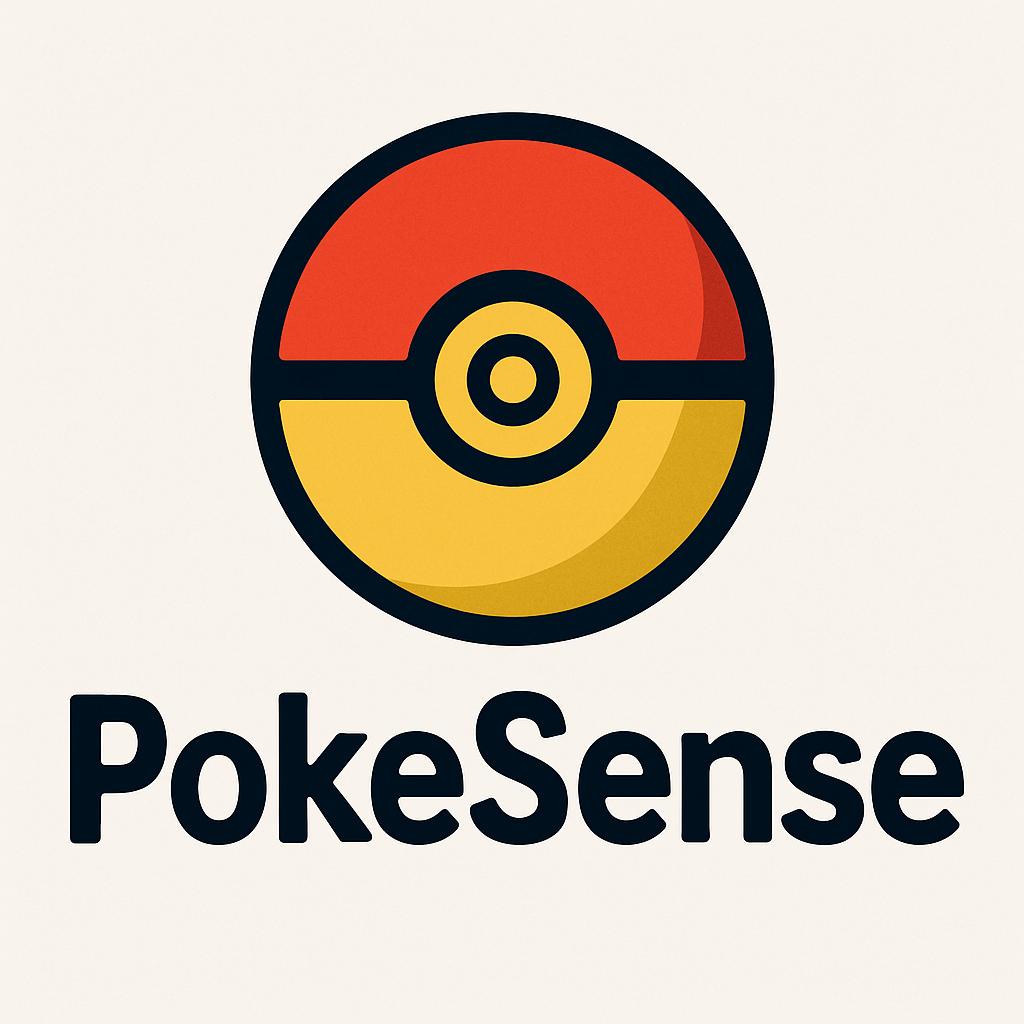PokeSense
A Comprehensive Pokémon Management System
Presented by Team PokeSense
Project Overview
PokeSense is a comprehensive Pokémon management application designed for Professor Oak's Research Lab. The system allows researchers to search, collect, and analyze Pokémon data through an intuitive interface with direct integration to the PokeAPI.
Our application demonstrates a clean separation between GUI, business logic, and data layers while providing a rich user experience for Pokémon enthusiasts and researchers alike.

Team PokeSense logo
The Problem
Professor Oak's Pokémon Research Lab faces significant challenges in their daily operations:
- Researchers waste hours manually looking up Pokémon information
- Paper-based system is inefficient and prone to loss
- No way to analyze Pokémon data effectively
- Difficult to share knowledge between researchers
- Field research data often gets lost or damaged
— Professor Oak

Professor Oak explaining the challenges to team members
Our Solution: PokeSense
A comprehensive Pokémon management system that:
Key Features
- Instant access to the complete Pokémon database
- Personal collections with notes and favorites
- Intuitive visualization of Pokémon data
- Persistent storage with easy retrieval
- User-friendly interface for researchers
Technical Highlights
- PokeAPI integration with caching
- Clean separation of concerns (MVC pattern)
- Multiple interfaces (GUI, console)
- Comprehensive test coverage
- Documentation and examples
Implementation Success
Since implementing PokeSense, Professor Oak's lab has reported:
73%
Reduction in time spent looking up Pokémon information
100%
Elimination of lost research notes
45%
Increase in collaborative research projects
92%
Adoption rate among researchers
Meet the Team

Ash
Responsibility: Architecture, integration, and project oversight
Strengths: Leadership, determination, strategic planning
Signature Tool: Git & Project Management
Misty
Responsibility: Business logic and PokeAPI integration
Strengths: Problem-solving, API design, data modeling
Signature Tool: Python Core & API Integration
Brock
Responsibility: UI design and Streamlit implementation
Strengths: UX/UI design, frontend development, user empathy
Signature Tool: Streamlit & Data Visualization
Serena
Responsibility: Data layer and testing
Strengths: Quality control, persistence, attention to detail
Signature Tool: Testing & Storage Implementation
— Team PokeSense Motto
Architecture
Three-Tier Architecture
PokeSense follows a clean separation of concerns with three distinct layers:
┌─────────────┐ ┌─────────────┐ ┌─────────────┐
│ GUI │ ↔ │ Logic │ ↔ │ Data │
│ (Streamlit)│ │ (Core) │ │ (Storage) │
└─────────────┘ └─────────────┘ └─────────────┘
Brock Misty Serena
(Frontend) (Business Logic) (Data Layer)
Ash
(Project Lead &
Integration)
Component Breakdown
- Presentation Layer (Brock): Streamlit web interface and console tools
- Business Logic Layer (Misty): PokeAPI integration, Pokemon collections, and operations
- Data Layer (Serena): Storage interfaces, JSON implementation, and data validation
- Integration (Ash): Cross-component communication and project structure
Directory Structure
tool-pokeapi/ ├── core/ # Core functionality │ ├── models.py # Data models │ ├── storage.py # Storage implementation │ ├── operations.py # Collection operations │ └── pokeapi_service.py # API integration ├── interfaces/ │ └── streamlit_app/ # Streamlit interface ├── examples/ # Example scripts ├── tests/ # Unit tests └── docs/ # Documentation
Development Process

Our team bonding with a dragon-type mascot during development sprints
Round-Robin Development Approach
We implemented a round-robin approach to ensure all team members gained experience across the full stack:
| Week | Ash | Misty | Brock | Serena |
|---|---|---|---|---|
| 1 | Integration | API | UI | Data |
| 2 | Data | Integration | API | UI |
| 3 | UI | Data | Integration | API |
| 4 | API | UI | Data | Integration |
Development Sprints
Sprint 1: Foundation (1 week)
Goal: Establish core architecture and basic API integration
Key Deliverables:
- Project structure and documentation
- Pokemon data model definition
- Basic PokeAPI integration
- Initial test framework
Primary Contributor: Ash & Misty
Sprint 2: Core Functionality (1 week)
Goal: Implement storage and collection operations
Key Deliverables:
- Storage interface and JSON implementation
- Pokemon collection operations (CRUD)
- Command-line MVP demo
- Unit tests for core components
Primary Contributor: Serena & Ash
Sprint 3: User Interface (1 week)
Goal: Create Streamlit interface and collection management
Key Deliverables:
- Streamlit web application
- Pokemon search and display
- Collection management features
- Type badges and stat visualization
Primary Contributor: Brock & Misty
Sprint 4: Refinement (1 week)
Goal: Polish UI, complete documentation, and add final features
Key Deliverables:
- Featured Pokemon display (Pikachu)
- Comprehensive test suite
- Final documentation and examples
- Presentation materials
Primary Contributor: All team members
Key Features Showcase
PokeAPI Integration
Seamless integration with the PokeAPI to retrieve comprehensive Pokemon data:
# Search for Pokémon
results = PokeApiService.search_pokemon("pikachu")
# Get Pokémon details
details = PokeApiService.get_pokemon_details("pikachu")
# Create Pokémon object
pokemon = PokeApiService.create_pokemon_from_api_data(details)
Implemented by: Misty
Data Persistence
Flexible storage system with JSON implementation:
# Initialize storage
storage = JsonStorage("pokemon_collection.json")
# Create collection
collection = PokemonCollection(storage)
# Add, retrieve, update, and delete operations
collection.add_pokemon(pokemon)
collection.get_pokemon(pokemon_id)
collection.update_pokemon(pokemon)
collection.delete_pokemon(pokemon_id)
Implemented by: Serena
User Interface
Intuitive Streamlit interface with rich visualization:
- Responsive grid layout for Pokemon cards
- Type-based color coding for easy identification
- Progress bars for visualizing Pokemon stats
- Expandable sections for detailed information
Implemented by: Brock
Pokemon Model
Comprehensive data model for Pokemon with validation:
@dataclass
class Pokemon:
name: str
pokemon_id: int
types: List[str]
sprites: Dict[str, str]
height: int
weight: int
stats: List[Dict[str, any]]
abilities: List[str]
moves: List[str]
favorite: bool = False
notes: str = ""
id: str = field(default_factory=lambda: str(uuid4()))
date_added: datetime = field(default_factory=datetime.now)
Implemented by: Ash
Testing and Quality Assurance
Comprehensive Test Suite
We implemented extensive testing to ensure code quality and reliability:
Unit Tests by Component
test_models.py: Pokemon data model validationtest_storage.py: Storage operationstest_operations.py: Collection managementtest_pokeapi_service.py: API integration
Testing Approach
- Mock-based testing for API calls
- Temporary file handling for storage tests
- Edge case coverage for validation
- Coverage reporting with HTML output
Coverage Targets
Our test suite maintains high coverage across components:
Quality Assurance Process
Led by Serena, our QA process includes:
- Automated Tests: Run on every code change
- Code Reviews: Every PR requires approval
- Documentation: Required for all new features
- Type Hinting: Used throughout the codebase
- Error Handling: Graceful recovery from failures
— Serena, QA Lead
Demo and Future Work
Live Demo Highlights
Our live demo showcases:
- Starting the application with featured Pokemon (Pikachu)
- Searching for Pokemon by name
- Viewing detailed Pokemon information
- Adding Pokemon to a personal collection
- Managing favorites and custom notes
Run It Yourself
To run PokeSense on your own machine:
# Clone the repository git clone https://github.com/CTS285_FA22/tool-pokeapi.git # Install dependencies pip install -r requirements.txt # Run the Streamlit web interface cd interfaces/streamlit_app streamlit run pokeapi_app.py # Or try the MVP console demo cd examples python pokemvp.py
Future Enhancements
Planned features for future releases:
- Team building with type coverage analysis
- Evolutionary chain visualization
- Advanced filtering by stats
- Mobile responsive design
- Dark mode support
- Internationalization
— Professor Oak
Thank You!
Any questions?
Team PokeSense
Ash - Project Lead
Misty - Technical Architect
Brock - Frontend Developer
Serena - Quality Assurance
Charizard - Team Mascot
GitHub Repository
github.com/CTS285_FA22/tool-pokeapi